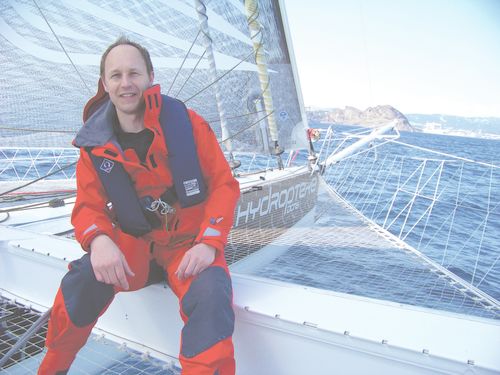
Issue #: 168
Published: November / December 2019
- Price per issue - digital : 6.20€Digital magazine
- Price per issue - print : 8.50€Print magazine
- Access to Multihulls World digital archives Digital archives

By Frédéric Monsonnec, member of the Golden Oldies association which maintains and restores former racing multihulls. Fred has also been passionate about hydrofoils since the early 1980s. He built a small hydrofoil trimaran and is involved in projects around this subject: refitting Eric Tabarly's hydrofoil Tornado, publishing articles in the press... He is one of the authors of the Foilers blog and with two other enthusiasts behind the French “La Semaine Affoilante” (foiling week).
In 1987, Eric Tabarly said, "One day, all sailboats will fly". Was he right? And if so, does that mean cruising multihulls as well? In 1967, David Keiper crossed the Pacific on Williwaw. A 20,000-mile cruise on his aluminum-hydrofoil-equipped craft. Even though, for the uninitiated, foiling feels like something very recent, the flying sailboat has been around for more than a century. A cruising multihull can therefore fly. And if you still doubt this, that’s because you don't know the TF10 and the Gunboat G4. We’re at a turning point. Previously, it was too early, foiling was not part of the expectations. But since the advent of the AC72s, hydrofoiling machines have been part of the scene. And they are indeed sailboats! Okay, so it is possible to have cruising multihull that flies, but is that desirable? If the counterparts of the concept are accepted and that doesn’t impinge on traditional boats, why not enjoy the magic of flight, increased performance, sensations, stability, improved passage through the sea? So, yes to multihulls allowing you to combine cruising with the pleasure of flying, with family or friends, not just single-handed or two-up on a beach cat. The trimaran, by virtue of its beam and its floats, most often not fitted-out, is better suited to the use of foils. A small multihull requires proportionally smaller foils than a larger unit. It’s difficult to define limits but as the surface area evolves to the square of the scale, so do the complexities! A flying vessel requires the use of high-tech materials, careful construction and more complex elements. Today, and for many years, for the same size, the extra cost is 100 to 150%! So yes, boarding passes for flying are expensive. Are you ready for takeoff? Not quite, we still need to master the essential requirement: the regulation of lift. On the open ocean, the hardest thing remains to be invented. Today, flight still requires constant, accurate watchkeeping at every moment and has specific conditions. Flying will need to be able to be managed by the ordinary sailor, not just those who have been to circus school. Control will be achieved either through the use of an appropriate architecture and design, or through electronic impact management. Developments born from the America's Cup offer hope for rapid improvements. But control is not the only limit: low mandatory weight, so limited interior layouts, resistance, costs, maintenance, space requirements... and the classic ...
What readers think
Post a comment
No comments to show.